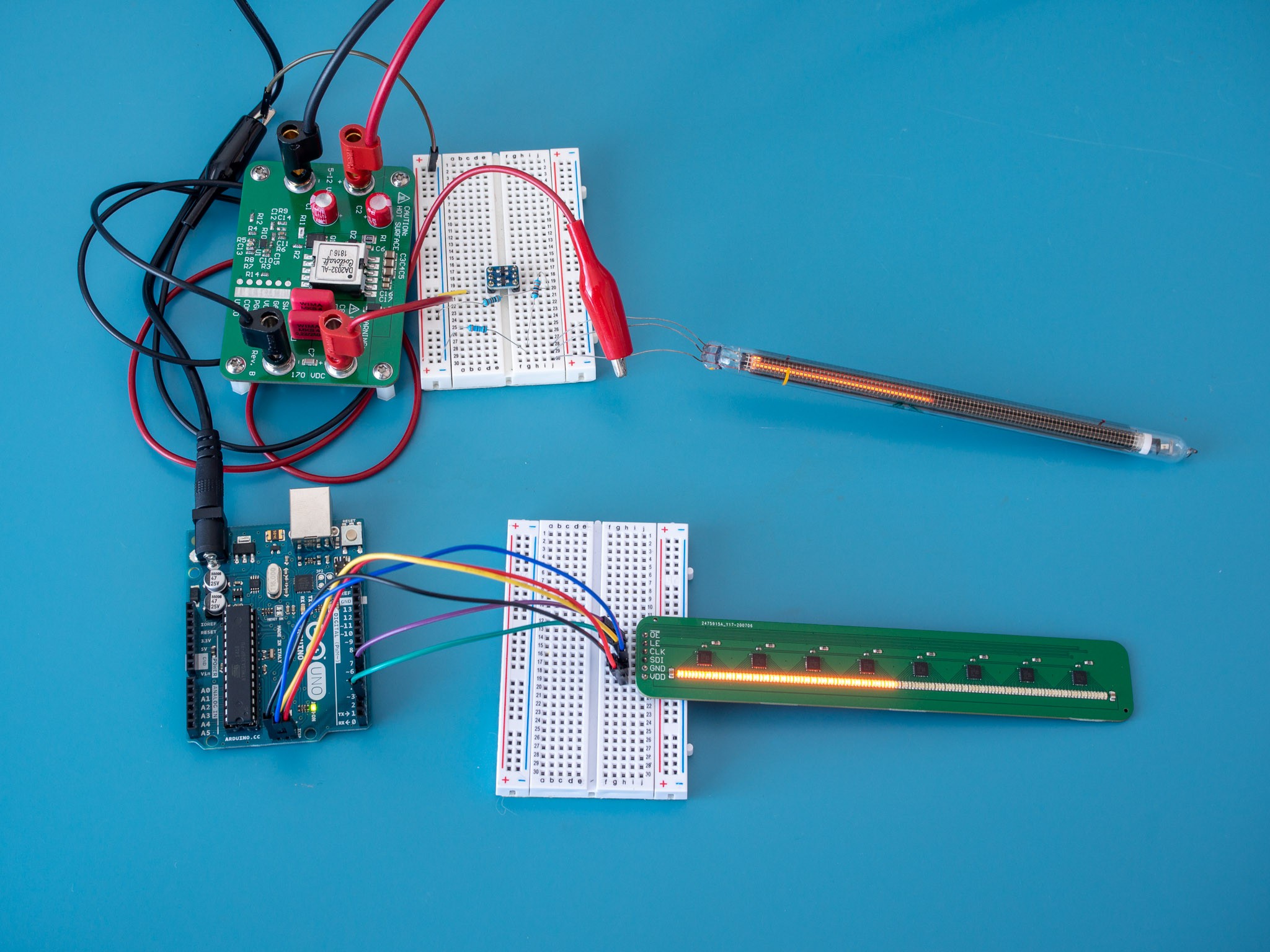I received 10 boards from JLCPCB with all the LEDs and passive parts assembled. The only remaining work was to place the eight shift register chips. Reflowing QFN by hand seemed straightforward at first, but proved a bit trickier than I thought. There were several boards needed some rework of one or two chips after testing.
For a quick demo, I wrote an Arduino sketch that lights the indicator like a growing progress bar. I used the built-in SPI pins on the Arduino for wiring the display board. The board does not communicate back to the Arduino, so it is unidirectional serial connection. Of course, unlike the Nixie tubes, this display isn't limited to a contiguous line starting from one end. Any pattern can be assigned the 128 shift register outputs.

Viewed at any more than a few feet or a meter away, the lit section looks almost continuous without a diffuser.
The LEDs are also pretty bright when driven at 5 mA. I set up the board next to a IN-13 driven by my flyback converter, and used PWM dimming down to 5% to take a comparison shot.

All told, it's a satisfying substitute for the IN-13, with the additional flexibility of higher brightness and capability of arbitrary patterns. Compared with the added cost and complexity of a power converter, and sourcing tubes that have been out of production for nearly four decades, it's already an economical substitute for microcontroller projects that need a discrete linear indicator.
I'm planning to offer these for sale on Tindie. If you're interested, please visit my Tindie store!
 James Wilson
James Wilson
Discussions
Become a Hackaday.io Member
Create an account to leave a comment. Already have an account? Log In.